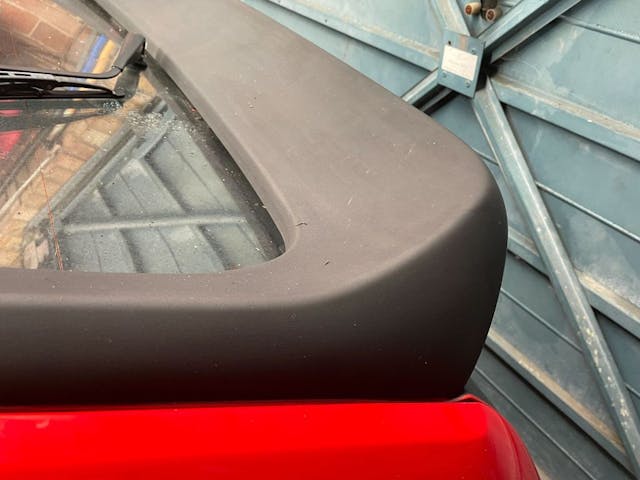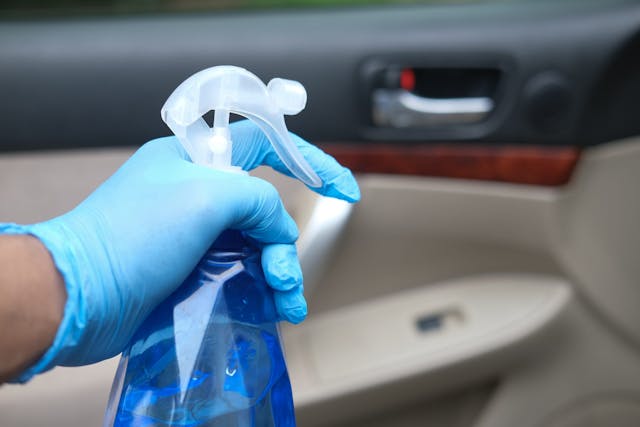Basics for Cleaning Plastics: Dressing or coating?
Richard Tipper has been tending to cars of all shapes and sizes since 1989, and he can spend up to a week detailing every inch of a vehicle. He has gone through more cleaning accessories and products than you’ll find on the shelves of an automotive superstore. When Tipper shares detailing tips, we listen.
Plastic trim can be subject to quite a lot of abuse, from UV damage to weathering to abrasion—and some of these factors can apply to both interior and exterior plastic trim. But there are numerous treatments and products you can use to clean and rejuvenate these parts of your car.
At its simplest, cleaning exterior plastic trim is done in much the same way as you would the rest of the car. There’s nothing specific about how to clean them, and I’ve written about the general car cleaning process before.

You can get dressings specific to plastic, though. They often come in spray form, or as a gel. What’s important to remember is that a dressing like this will eventually wash off, maybe even as soon as the first time you wash the car after applying it. Some of the better ones can hold on longer—maybe two or three washes. Less if you’re driving regularly in the rain.
More durable treatments exist, and these tend to be called coatings. They have quite tough bonding agents that stick to the plastic. They can be quite liquefied and oily when you apply them, but then they cure and ultimately leave the plastic looking quite shiny. If you’re applying to rubber (such as the spoilers on some older cars), coatings can sometimes be absorbed into the rubber, almost feeding it to give it a new look.
As always, read the directions of any product before using it. You need to be a little careful with some of the dressings, particularly inside the car, as silicone-based products tend to be slippery to the touch, and if they transfer to your fingers, you can then spread that onto other surfaces.

I’d tend to start with simply a warm, soapy, microfibre cloth to clean interior plastics, which is often enough to refresh them. Some dedicated interior cleaners are detergent-based, and some appropriate for fabrics can also be used on plastics. With those you can either spray directly onto the surface, or onto a cloth first; the advantage of the latter is that the product won’t go everywhere.
The other thing to be cautious of with some of the dressings is that it can make plastics quite shiny, so you may want to avoid it on the top of the dashboard, to prevent glare. Again, here I’d be more inclined to wipe the top of the dash clean with first a soapy microfibre, then a dry cloth. Minor details—switches, or tight corners—can be handled by detailing buds or brushes (though be careful not to use brushes on instrument or touchscreen displays, to avoid scratching them).
And if you have a plastic steering wheel, a similar thing applies. Any product with silicone might make it slippery or tacky to the touch, which isn’t ideal for a surface you’re handling all the time.
You can follow Richard Tipper on Twitter @perfectionvalet



I try to stay away from silicone dressings. For hard black plastics that start to turn gray, I use WD-40. Spray it on a rag and apply. Let it soak in, perhaps over night, repeat until the the black returns. The WD-40 appears to replace the lost esters (?) that make the plastic fade. Works on tires as well to make them black without the fake shine. Finally, if you have late model motorcycle with and x-ring or o-ring chain, don’t use chain lube. Simply spray WD-40 on a rag and slowly rub it into the chain to clean the outer portions and protect against rust.
What about fuzzy stuff like Alcantara steering wheels?
Richard…Thank You for the suggestion on WD-40…I will try that process. Another matter…I have several Buicks…1969 through 1971 Gran Sports, mostly original but with some engine/suspension mods…One situation that I experience is that the Steering Wheel composite (Plastic) material becomes “sticky” within several months after cleaning with Dawn and water…any suggestions? Thank You, Alan G
A four-generation auto upholstery shop here in the SF/Oakland/Berkeley East Bay Area, since 1897 upholstering carriages, landaulettes, doing work from everyone from concours winners to Blackhawk Museum/Behring Collection, voids their work if a customer persists in using Armor All, which is no more than lip gloss for vinyl, rubber, essentially creating a greenhouse effect. The best way to preserve new or restored vinyl, rubber is to park in the shade, always use a sun shade. UV rays are not good for cars.
This goes for interior trim, moldings, running board matting, tires.
Just wipe now and then with a damp, warm terrycloth towel and keep out of the sun.
The article was very vague. Didn’t mention any products by name. What was the point of it?
Becarefull cleaning interior parts of Ferraris and Maseratis. The rubberized coating used on things like daah buttons and window switched turn into a sticky black blob from some common cleansers used by detailers. They get so sticky that they have to be removed and replaced (big $$).
Mercedes also with some switches on sterring wheel and dash
I’m not a professional car detailer more of a car enthusiast who likes to keep a car as good looking as possible.
One thing I swear by for faded black exterior plastic trim is Linseed Oil.
Just a small amount on a microfibre cloth and rub it into the plastic then wipe off excess. It may take a few attempts to get plastic back to black but when you do it stays black far longer than any other product I’ve ever used and it’s dirt cheap.